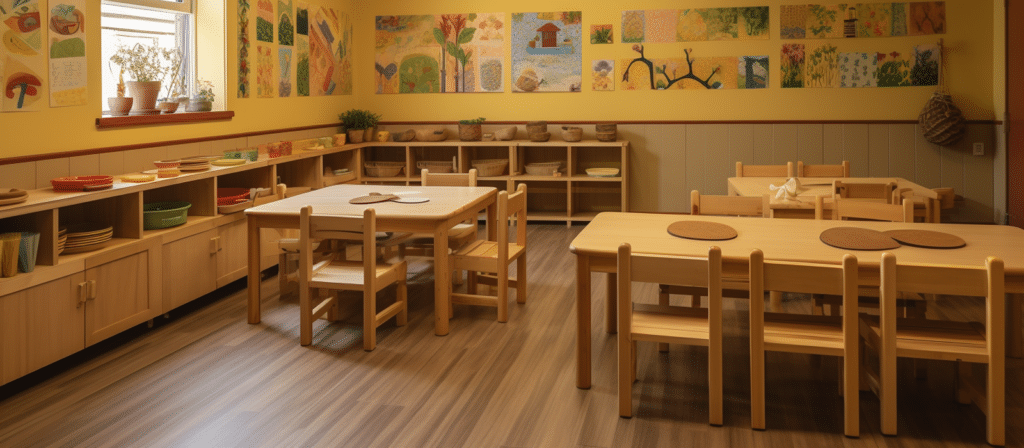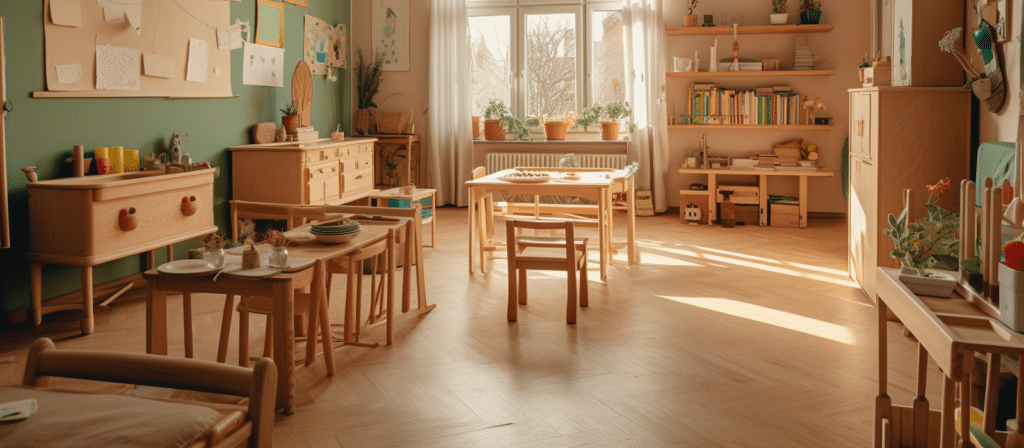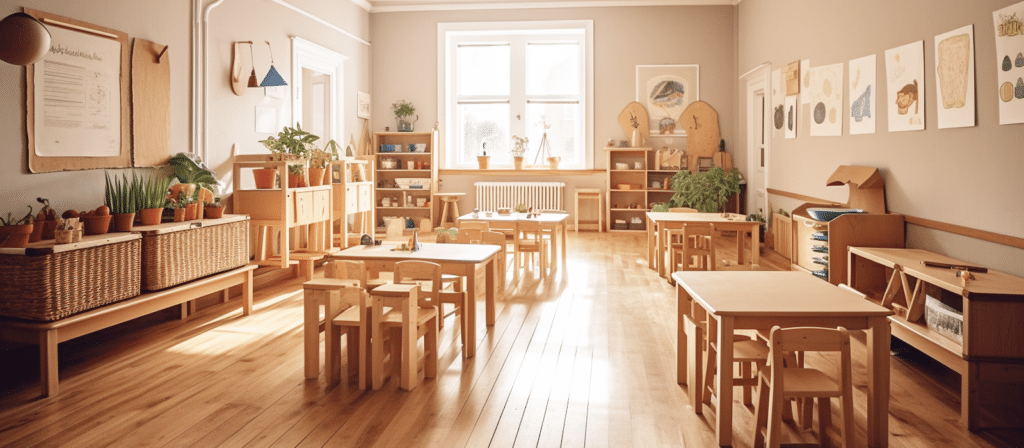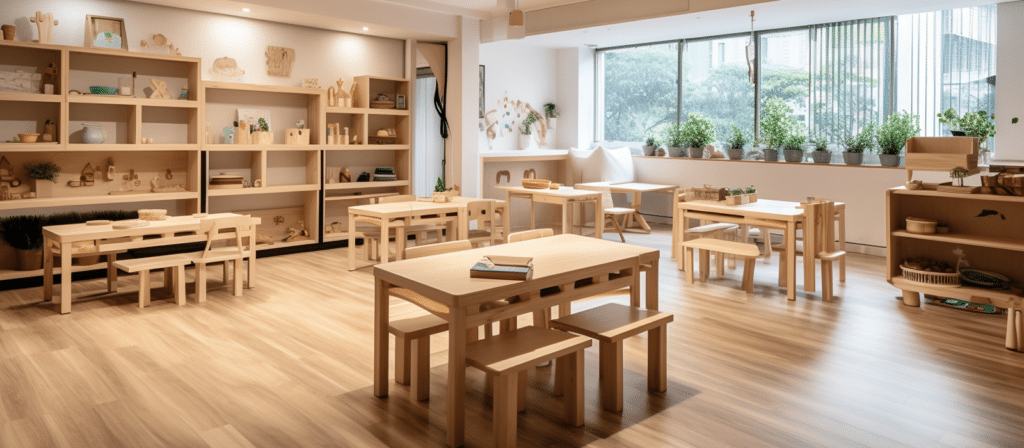In the realm of education, fostering curiosity and igniting the spark of creativity in young minds is a pursuit that holds immense value. Children’s innate curiosity coupled with their natural inclination for exploration make them natural makers and creators. This profound understanding has paved the way for innovative approaches, such as “The Makerspace Movement,” which emerged as a transformative force in the 21st century. The movement’s primary objective has been to seamlessly integrate science, technology, engineering, arts, and mathematics (STEAM) into the fabric of education, from kindergarten to higher learning. These vibrant hubs of exploration, known as “Makerspaces,” have flourished across schools, inspiring students to innovate, create, and invent. Contrary to misconceptions, crafting a culture of making doesn’t necessitate an exorbitant budget for high-tech equipment; it thrives on ingenuity, imagination, and resourcefulness.
Exploring the Essence of Making
Pause a moment to delve into the core essence of “making.” According to The National Association for the Education of Young Children (NAEYC), “tinkering” is the art of exploration – a random dance with materials, while “making” is the transformative act of bringing imagination to life. Going a step further, “engineering” entails applying external constraints to the making process, resulting in a creation that serves a purpose – think of a bridge crafted from blocks that carries toy cars across.
The Mandate of Maker-Centered Learning
If children are inherently imaginative and already engaged in making, one might wonder about the significance of infusing STEAM experiences into their learning journey. The rationale behind this shift is firmly anchored in evidence-based insights.
From the outset, children commence their journey of self-discovery and self-efficacy. Early exposure to STEAM activities, especially for underrepresented groups, cultivates “STEM-possible selves,” broadening horizons for their future.
Children’s knack for envisioning entire worlds finds a partner in concrete examples. Just as language and social interactions shape their understanding, “constructionism,” as advocated by Seymour Papert, comes into play. Building tangible objects cultivates their grasp of physics, math, and science, while fostering collaborative skills and creativity. Within this realm of making, a sense of agency emerges as students experiment, suggest, and learn from their peers.

Experimentation: A Nexus of Problem-Solving and Emotional Growth
As children explore the intricacies of the world around them, they develop reflective thinking and personal perspectives. Crafting plans, testing hypotheses, and reflecting on outcomes build executive functions and problem-solving skills. Making unveils the world as a malleable canvas, inspiring change.
Educators, too, embark on a journey of discovery, witnessing the remarkable capacity and creativity of their young charges. This shared exploration cultivates social-emotional growth, as mutual respect and recognition flourish.
Crafting the Growth Mindset through Making
The essence of making lies in iterative design – a continuous cycle of prototyping and refining. This nurtures a growth mindset, a valuable trait that influences learning trajectories as students transition to stages where outcomes eclipse processes.
Creating a Nurturing Making Environment
Establishing a maker-centered culture doesn’t hinge on pricey equipment. It hinges on deliberate arrangement and presentation. Thoughtful consideration is given to seating arrangements and spaces:
- A spacious, low table with versatile seating options fosters collaboration and free-flowing idea exchange.
- A round rug forms a central platform for sharing and discussing creations, promoting a sense of community.
- A cozy corner with plush pillows and engaging materials provides a retreat for recharging amidst the energetic making process.

Cultivating Order and Inspiration
Organizational strategy is paramount:
- Low, accessible shelves, adorned with labeled containers, empower students with agency, stimulating creativity.
- Displaying students’ projects – not only finished products but also blueprints and prototypes – fuels inspiration and constructive feedback.
Embarking on the Journey of Making
Diverse expressions of making enrich the early childhood education (ECE) classroom, spanning from intricate projects to simplified making stations. Yet, a fundamental principle remains: the driving force must be the child.
Crafting with Purpose: Maker Stations
Maker stations offer a splendid gateway for educators to explore making. These spaces brim with open-ended objects, inviting students to shape their creative journey. The freedom to blend elements and experiment becomes the crux of these stations’ success.

Evolving Spaces: Maker Corners
Over time, the fascination with maker stations might lead to designated corners for open-ended exploration. The focus shifts from objects to how children’s chosen elements interact, creating an evolving landscape of discovery.
Blossoming Projects: A Fusion of Inquiry and Learning
Projects spring forth from children’s inquisitiveness, sometimes enveloping the entire classroom. These ventures leverage children’s inquiries to deepen learning, transforming them into comprehensive explorations. The documentation arising from these projects becomes a repository of shared experiences, enriching both students and educators alike.
With these insights, you’re now poised to embark on a journey of making, fostering a community of change-makers and leaders. Embrace the role of nurturing curiosity, guiding young minds to unravel the intricacies of the designed world that surrounds us.







